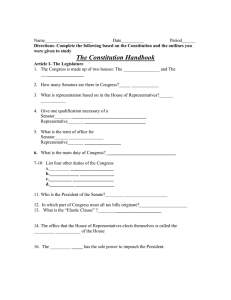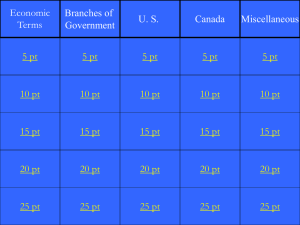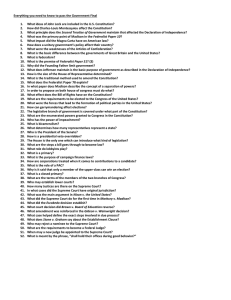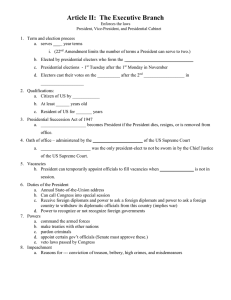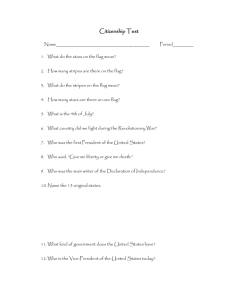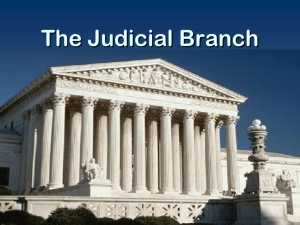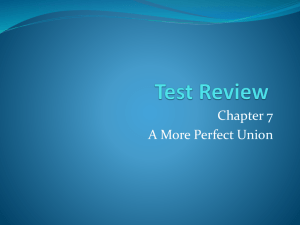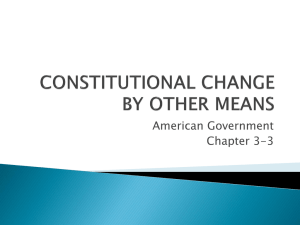2nd set of notes - Crest Ridge R-VII
advertisement
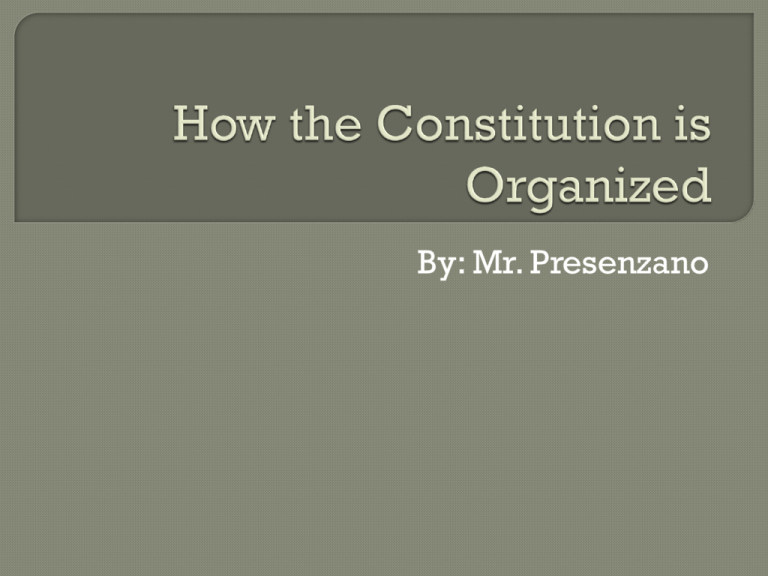
By: Mr. Presenzano A. First paragraph of the Constitution B. Purpose 1. Introduce the Constitution 2. Explain what the Constitution is meant to do A. Our law-making branch. B. Congress (Legislature) 1. The Senate a. 2 per state = 100 total b. 6 year terms Claire McCaskill Took Office: Jan 4, 2007 Next Election: 2018 Party: Democrat Roy Blunt Took Office: Jan 5, 2011 Next Election: 2016 Party: Republican Source: https://www.govtrack.us/congress/members/MO 2. The House of Representatives a. Based on population b. 435 U.S. representatives c. 2 year terms 3. Powers of Congress a. Write bills which can become law b. Collect taxes c. Declare war Lacy Clay Jr. Emanuel Cleaver II Ann Wagner Sam Graves Blaine Luetkemeyer Vicky Hartzler Billy Long Jason Smith A. Executes or carries out laws B. President heads branch. C. Vice-President and President’s Cabinet D. President’s Powers include: 1. Commander-in-chief of military 2. Appoints Supreme Court Justices 3. Maintains a cabinet of advisors 4. Granting pardons in federal criminal cases A. Interprets laws to decide what they mean and whether they are followed. B. Supreme Court and federal courts C. Supreme Court Justices (Judges) 1. Appointed by President. 2. Serve for life A. States can create and enforce laws, too. B. States have to work with other states and respect their laws. C. A governor heads each state (elected by the citizens) Governor Jay Nixon VI. Article 5 --The Constitution can be amended (changed). VII. Article 6 – Supreme Law of the Land A. Federalism 1. National government and state governments share power. 2. The national government is higher than state government. A. Adding Amendments to the Constitution 1. Must be proposed by 2/3 of both houses of Congress. 2. Must be ratified by 3/4 of all states
